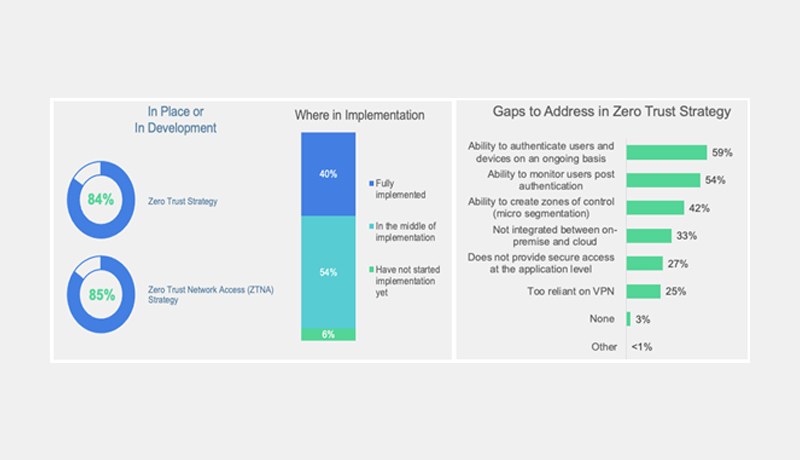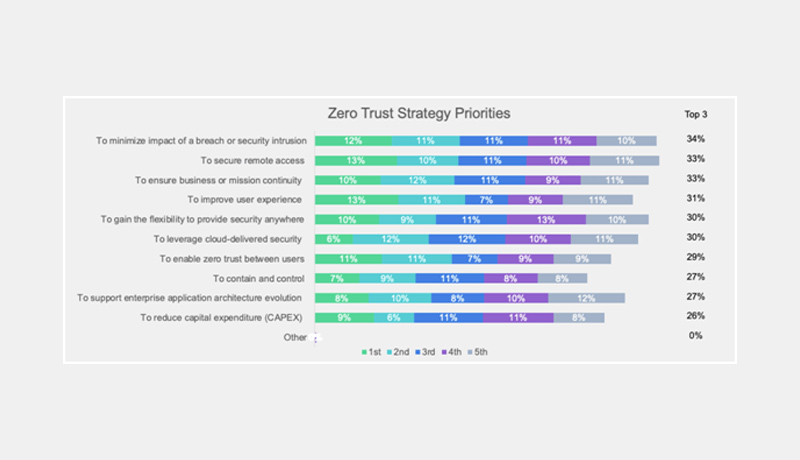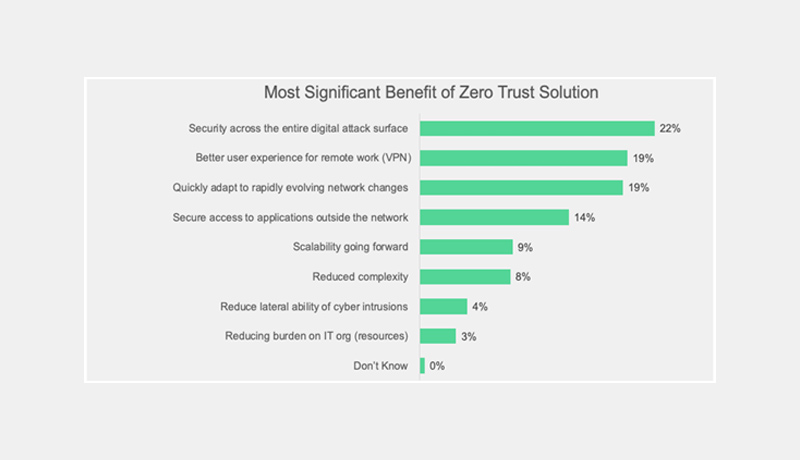
The Global State of Zero Trust Report was released by Fortinet. The survey reveals that while most organizations have a vision of zero trust or are in the process of implementing zero-trust initiatives, more than half of organizations cannot translate this vision into the solutions they are implementing because they lack some basic core fundamentals of zero trust. For a detailed view of the findings and some important takeaways, read the blog. Highlights of the report follow:
The volume and sophistication of assaults targeting individuals, businesses, and increasingly vital infrastructure has increased, according to the FortiGuard Labs Threat Landscape Report. Zero trust is front of mind for organisations looking for solutions to protect against these developing threats, but for a variety of reasons. Furthermore, the transition to work-from-anywhere has highlighted the importance of zero-trust network access (ZTNA), as businesses must safeguard critical assets from workers connecting from unprotected home networks.
“With the evolving threat landscape, transition to work-from-anywhere, and the need to securely manage applications in the cloud, the shift from implicit trust to zero trust is top of mind for organizations. Our survey shows while most organizations have some form of a zero-trust strategy in place, they fall short of a holistic strategy and struggle to implement some core zero-trust security basics. An effective solution requires a cybersecurity mesh platform approach to address all zero-trust fundamentals across the infrastructure, including endpoint, cloud, and on-premises, otherwise the result is a partial, non-integrated solution that lacks broad visibility.”
The analysis reveals significant ambiguity regarding what constitutes a complete zero-trust strategy. Over 80% of respondents said they understand the concepts of zero trust (77%) and ZTNA (75%) and that they already have or are developing a zero-trust and/or ZTNA plan. Despite this, more than half of respondents said they were unable to deploy core zero-trust features. Nearly 60% said they don’t have the ability to authenticate users and devices on a regular basis, and 54% said they have trouble monitoring users after they’ve been authenticated.
This discrepancy is concerning since these functions are essential zero-trust pillars, and it calls into question what the actual reality of these implementations across businesses is. The terms “zero trust access” and “zero trust network access,” which are sometimes used interchangeably, add to the confusion.

“Minimizing the impact of breaches and incursions” is a top priority for zero trust, followed by “securing remote access” and “ensuring business or mission continuity.” Top priorities included “improving user experiences” and “gaining flexibility to provide security everywhere.”

“Security across the entire digital attack surface” was the single most important benefit cited by respondents, followed by a “better user experience for remote work (VPN).”

The vast majority of poll participants feel that zero-trust security solutions must be integrated with current infrastructure, work across cloud and on-premises systems, and be secure at the application layer. However, more than 80% of respondents said that implementing a zero-trust strategy across an extended network is difficult. Obstacles for firms without a strategy in place or in development included a lack of competent resources, with 35% of organisations relying on other IT solutions to deal with zero trust.